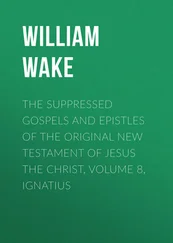Ignatius Donnelly - Antediluvian world
Здесь есть возможность читать онлайн «Ignatius Donnelly - Antediluvian world» весь текст электронной книги совершенно бесплатно (целиком полную версию без сокращений). В некоторых случаях можно слушать аудио, скачать через торрент в формате fb2 и присутствует краткое содержание. Жанр: Старинная литература, на русском языке. Описание произведения, (предисловие) а так же отзывы посетителей доступны на портале библиотеки ЛибКат.
- Название:Antediluvian world
- Автор:
- Жанр:
- Год:неизвестен
- ISBN:нет данных
- Рейтинг книги:5 / 5. Голосов: 1
-
Избранное:Добавить в избранное
- Отзывы:
-
Ваша оценка:
- 100
- 1
- 2
- 3
- 4
- 5
Antediluvian world: краткое содержание, описание и аннотация
Предлагаем к чтению аннотацию, описание, краткое содержание или предисловие (зависит от того, что написал сам автор книги «Antediluvian world»). Если вы не нашли необходимую информацию о книге — напишите в комментариях, мы постараемся отыскать её.
Antediluvian world — читать онлайн бесплатно полную книгу (весь текст) целиком
Ниже представлен текст книги, разбитый по страницам. Система сохранения места последней прочитанной страницы, позволяет с удобством читать онлайн бесплатно книгу «Antediluvian world», без необходимости каждый раз заново искать на чём Вы остановились. Поставьте закладку, и сможете в любой момент перейти на страницу, на которой закончили чтение.
Интервал:
Закладка:
The number of monuments left by the Mound Builders is extraordinarily great. In Ohio alone there are more than ten thousand tumuli, and from one thousand to fifteen hundred enclosures. Their mounds were not cones but four-sided pyramids-their sides, like those of the Egyptian pyramids, corresponding with the cardinal points. (Foster’s “Prehistoric Races,” p. 112.)
The Mound Builders had attained a considerable degree of civilization; they were able to form, in the construction of their works, perfect circles and perfect squares of great accuracy, carried over the varying surface of the country. One large enclosure comprises exactly forty acres. At Hopetown, Ohio, are two walled figures—one a square, the other a circle—each containing precisely twenty acres. They must have possessed regular scales of measurement, and the means of determining angles and of computing the area to be enclosed by the square and the circle, so that the space enclosed by each might exactly correspond.
“The most skilful engineer of this day would find it difficult,” says Mr. Squier, “without the aid of instruments, to lay down an accurate square of the great dimensions above represented, measuring, as they do, more than four-fifths of a mile in circumference. . . . But we not only find accurate squares and perfect circles, but also, as we have seen, octagons of great dimensions.”
They also possessed an accurate system of weights; bracelets of copper on the arms of a skeleton have been found to be of uniform size, measuring each two and nine-tenth inches, and each weighing precisely four ounces.
They built great military works surrounded by walls and ditches, with artificial lakes in the centre to supply water. One work, Fort Ancient, on the Little Miami River, Ohio, has a circuit of between four and five miles; the embankment was twenty feet high; the fort could have held a garrison of sixty thousand men with their families and provisions.
Not only do we find pyramidal structures of earth in the Mississippi Valley very much like the pyramids of Egypt, Mexico, and Peru, but a very singular structure is repeated in Ohio and Peru: I refer to the double walls or prolonged pyramids, if I may coin an expression, shown in the cut page 375.
GRAND
WAY
NEAR
PIKETON
,
OHIO
.
The Mound Builders possessed chains of fortifications reaching from the southern line of New York diagonally across the country, through Central and Northern Ohio to the Wabash. It would appear probable, therefore, that while they
WALLS
AT
GRAN-CHIMU
,
PERU
.
advanced from the south it was from the north-east the savage races came who drove them south or exterminated them.
At Marietta, Ohio, we find a combination of the cross and pyramid., (See p. 334, ante.) At Newark, Ohio, are extensive CROSS AND PYRAMID MOUND, OHIO.
and intricate works: they occupy an area two miles square, embraced within embankments twelve miles long. One of the mounds is a threefold symbol, like a bird’s foot; the central mound is 155 feet long, and the other two each 110 feet it length. Is this curious design a reminiscence of Atlantis and the three-pronged trident of Poseidon? (See 4th fig., p, 242, ante.)
The Mound Builders made sun-dried brick mixed with rushes, as the Egyptians made sun-dried bricks mixed with straw; they worked in copper, silver, lead, and there are evidences, as we shall see, that they wrought even in iron.
Copper implements are very numerous in the mounds. Copper axes, spear-heads, hollow buttons, bosses for ornaments, bracelets, rings, etc., are found in very many of them strikingly similar to those of the Bronze Age in Europe. In one in Butler County, Ohio, was found a copper fillet around the head of a skeleton, with strange devices marked upon it.
Silver ornaments have also been found, but not in such great numbers.
They seem to have attached a high value to silver, and it is often found in thin sheets, no thicker than paper, wrapped over copper or stone ornaments so neatly as almost to escape detection. The great esteem in which they held a metal so intrinsically valueless as silver, is another evidence that they must have drawn their superstitions from the same source as the European nations.
Copper is also often found in this manner plated over stone pipes, presenting an unbroken metallic lustre, the overlapping edges so well polished as to be scarcely discoverable. Beads and stars made of shells have sometimes been found doubly plated, first with copper then with silver.
The Mound Builders also understood the art of casting metals, or they held intercourse with some race who did; a copper axe it “cast” has been found in the State of New York. (See Lubbock’s “Prehistoric Times,” p.
254, note.) Professor Foster (“Prehistoric Races,” p. 259) also proves that the ancient people of the Mississippi Valley possessed this art, and he gives us representations of various articles plainly showing the marks of the mould upon them.
A rude article in the shape of an axe, composed of pure lead, weighing about half a pound, was found in sinking a well within the trench of the ancient works at Circleville. There can be no doubt it was the production of the Mound Builders, as galena has often been found on the altars in the mounds.
It has been generally thought, by Mr. Squier and others, that there were no evidences that the Mound Builders were acquainted with the use of iron, or that their plating was more than a simple overlaying of one metal on another, or on some foreign substance.
Some years since, however, a mound was opened at Marietta, Ohio, which seems to have refuted these opinions. Dr. S. P. Hildreth, in a letter to the American Antiquarian Society, thus speaks of it: “Lying immediately over or on the forehead of the body were found three large circular bosses, or ornaments for a sword-belt or buckler; they are composed of copper overlaid with a thick plate of silver. The fronts are slightly convex, with a depression like a cup in the centre, and they measure two inches and a quarter across the face of each. On the back side, opposite the depressed portion, is a copper rivet or nail, around which are two separate plates by which they were fastened to the leather. Two small pieces of leather were found lying between the plates of one of the bosses; they resemble the skin of a mummy, and seem to have been preserved by the salts of copper. Near the side of the body was found a plate of silver, which appears to have been the upper part of a sword scabbard; it is six inches in length, two in breadth, and weighs one ounce. It seems to have been fastened to the scabbard by three or four rivets, the holes of which remain in the silver.
“Two or three pieces of copper tube were also found, filled with iron rust. These pieces, from their appearance, composed the lower end of the scabbard, near the point of the sword. No signs of the sword itself were discovered, except the rust above mentioned.
“The mound had every appearance of being as old as any in the neighborhood, and was at the first settlement of Marietta covered with large trees. It seems to have been made for this single personage, as this skeleton alone was discovered. The bones were very much decayed, and many of them crumbled to dust upon exposure to the air.”
Mr. Squier says, “These articles have been critically examined, and it is beyond doubt that the copper bosses were absolutely plated, not simply overlaid, with silver. Between the copper and the silver exists a connection such as, it seems to me, could only be produced by heat; and if it is admitted that these are genuine relics of the Mound Builders, it must, at the same time, be admitted that they possessed the difficult art of plating one metal upon another. There is but one alternative, viz., that they had occasional or constant intercourse with a people advanced in the arts, from whom these articles were obtained. Again, if Dr. Hildreth is not mistaken, oxydized iron or steel was also discovered in connection with the above remains, from which also follows the extraordinary conclusion that the Mound Builders were acquainted with the use of iron, the conclusion being, of course, subject to the improbable alternative already mentioned.”
Читать дальшеИнтервал:
Закладка:
Похожие книги на «Antediluvian world»
Представляем Вашему вниманию похожие книги на «Antediluvian world» списком для выбора. Мы отобрали схожую по названию и смыслу литературу в надежде предоставить читателям больше вариантов отыскать новые, интересные, ещё непрочитанные произведения.
Обсуждение, отзывы о книге «Antediluvian world» и просто собственные мнения читателей. Оставьте ваши комментарии, напишите, что Вы думаете о произведении, его смысле или главных героях. Укажите что конкретно понравилось, а что нет, и почему Вы так считаете.












